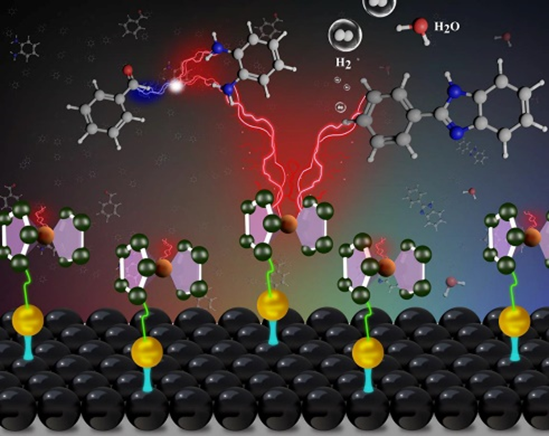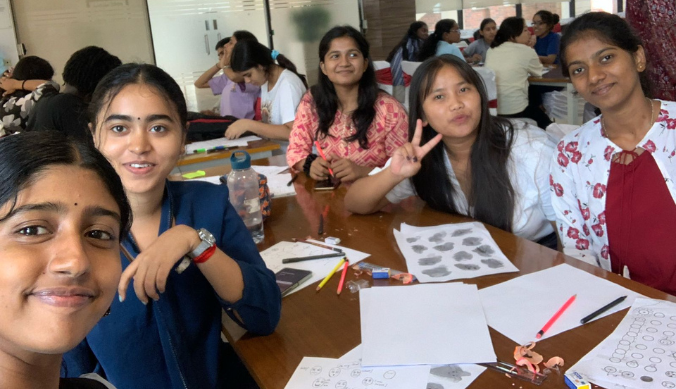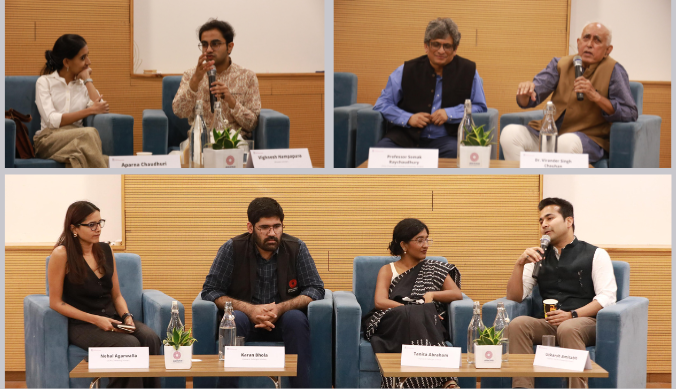Towards Sustainable Energy Solutions: Mimicking Nature to Drive Vital Chemical Reactions
As the world urgently seeks sustainable energy solutions, Dr Munmun Ghosh is conducting groundbreaking research to produce hydrogen gas and reduce greenhouse gases using nature-inspired catalysts, while also developing eco-friendly methods for synthesising valuable organic compounds.
As the world grapples with the urgent need for sustainable energy, we are dedicated to pursuing fundamental research in the quest for artificial energy sources while prioritising environmental conservation. Central to our mission is the dual aim of Hydrogen gas (H2) production and mitigating the detrimental effects of excessive greenhouse gases, particularly CO2 emissions.
Nature showcases remarkable capabilities in converting hydrogen ions from water into hydrogen gas through an enzyme known as ‘Hydrogenase’. These enzymes consist of metals such as iron or nickel, coupled with amino acids, and are commonly referred to as ‘Metalloenzymes’. An extensive research effort is underway to comprehensively understand the mechanisms underlying natural proton reduction.

However, the precise mechanisms through which nature facilitates this reaction remain elusive. Research led by Munmun Ghosh, Assistant Professor of Chemistry at Ashoka University, is primarily focused on mimicking the functioning of metalloenzymes for hydrogen (H2) production while also trying to unravel the underlying reaction mechanisms, which are crucial for the development of more efficient catalysts.

To elaborate, they are working on synthesising a range of metal complexes that can catalyse:
- Electrochemical reduction of CO2 into value-added products like methane (CH4), methanol (CH3OH), ethanol (C2H5OH), and more.
- Production of H2 using water or other proton sources like acids. H2 holds immense potential to replace fossil fuels and meet the escalating global energy demand.
Moreover, Dr Ghosh is actively involved in developing molecular catalysts capable of facilitating these conversions in a heterogeneous medium. This approach offers enhanced activity and is more environment-friendly, as the catalyst can be recovered, unlike in homogeneous catalysis.
Additionally, Dr Ghosh and her team are also involved in developing a facile and sustainable electrochemical synthetic strategy for producing important organic compounds. This approach holds significant promise for the pharmaceutical industry, offering a greener, more economical, and more efficient synthesis of drugs.

For instance, they have successfully developed a ferrocene-based electrocatalyst, anchored on Toray carbon paper (TCP) and coated with conducting polymeric films. This catalyst facilitates the electrochemical dehydrogenative cyclization reaction of o-phenylenediamine and benzaldehyde, resulting in the synthesis of phenyl benzimidazole in quantitative yield. Notably, benzimidazole and its derivatives showcase diverse pharmacological activities, including antimicrobial, antiviral, anticancer, anti-inflammatory, and more.
Edited by Yukti Arora and Kangna Verma, (Academic Communications, Research and Development Office, Ashoka University)
Reference Article:
Bioinspired Diiron Complex with Proton Shuttling and Redox-Active Ligand for Electrocatalytic Hydrogen Evolution, Inorganic Chemistry
Authors: Pankaj Kumar, Bharath M, Anjumun Rasool, Serhiy Demeshko, Suresh Bommakanti, Narottom Mukhopadhyay, Rajeev Gupta, Manzoor Ahmad Dar, and Munmun Ghosh
Study at Ashoka













